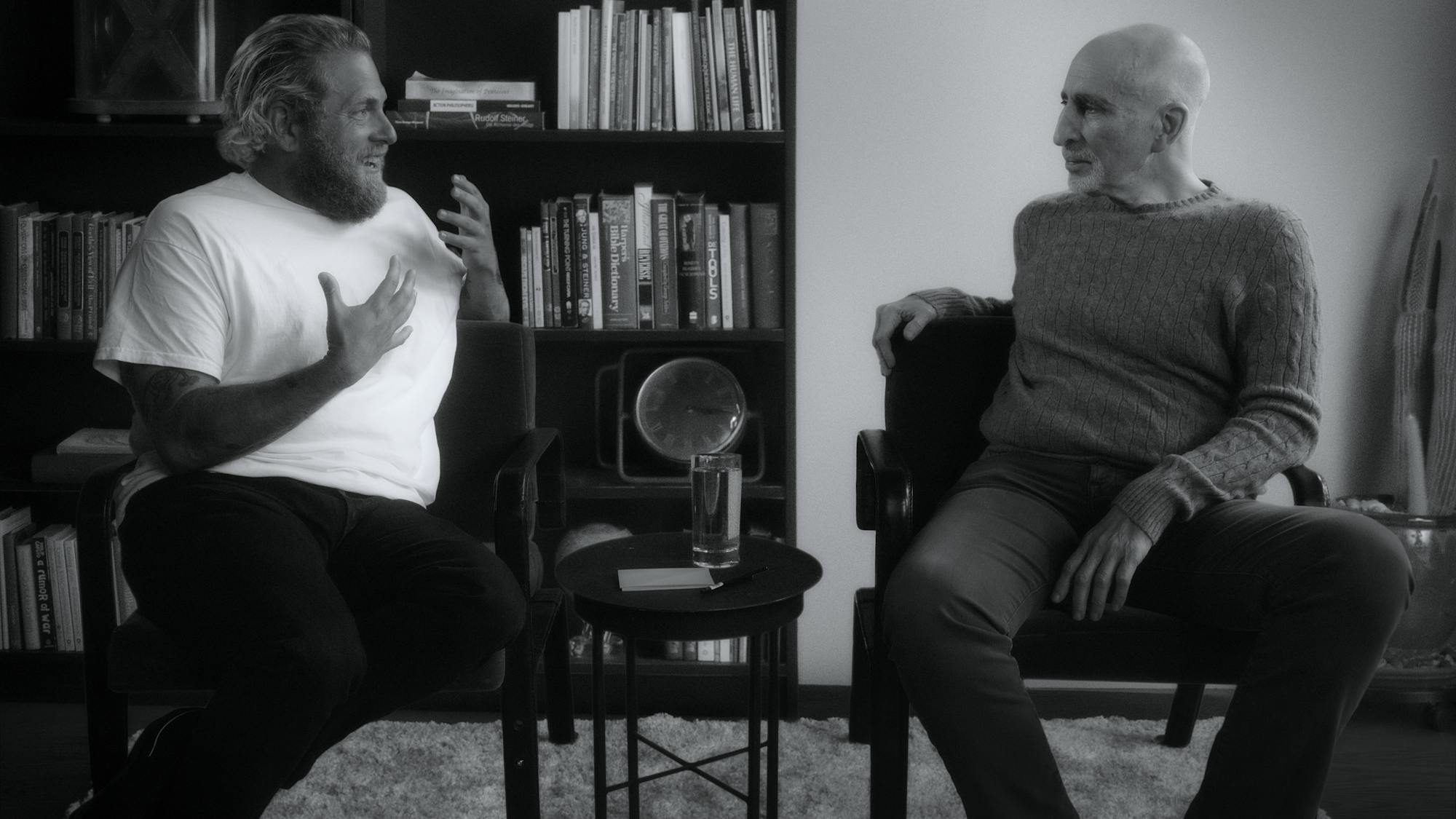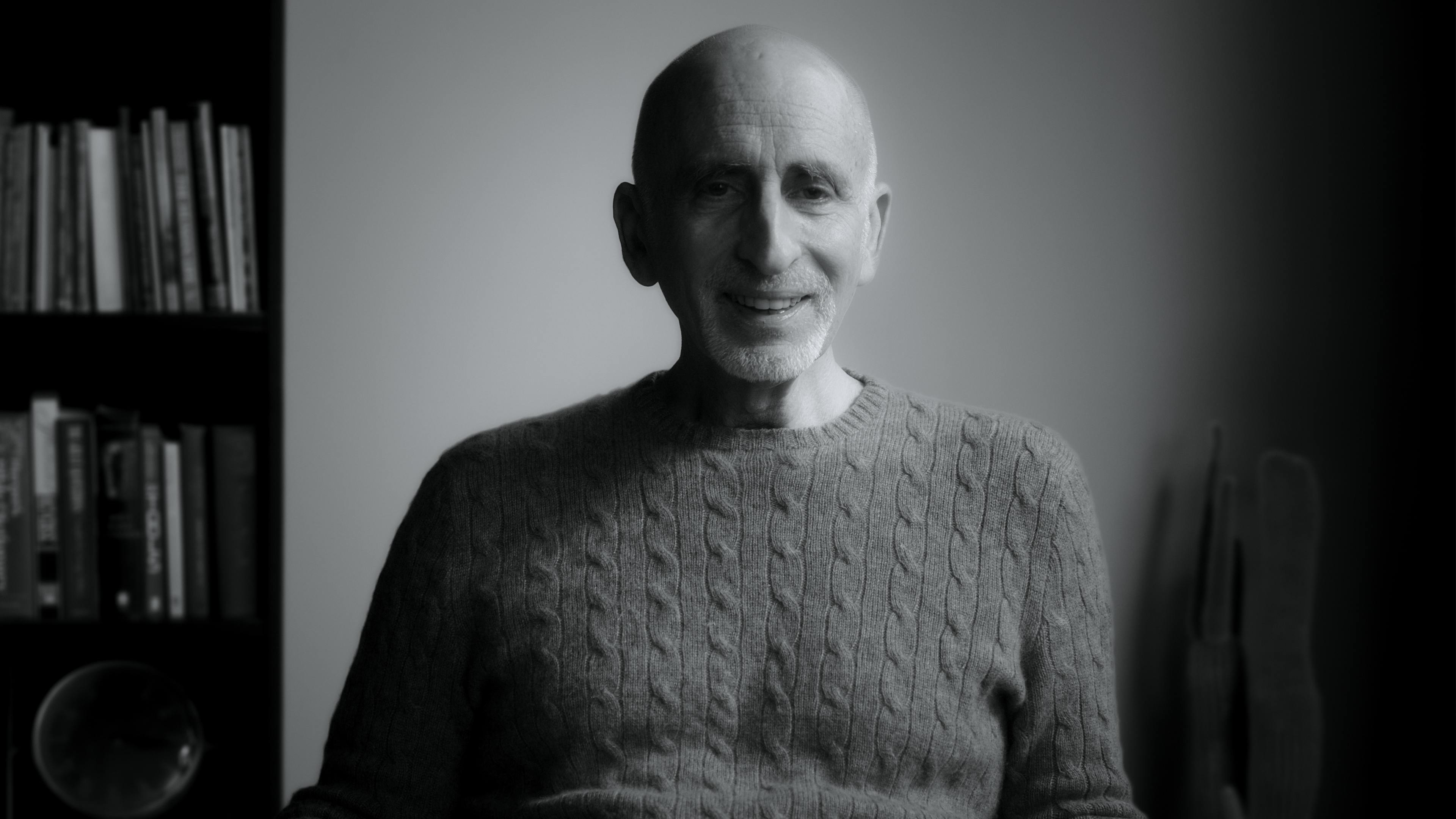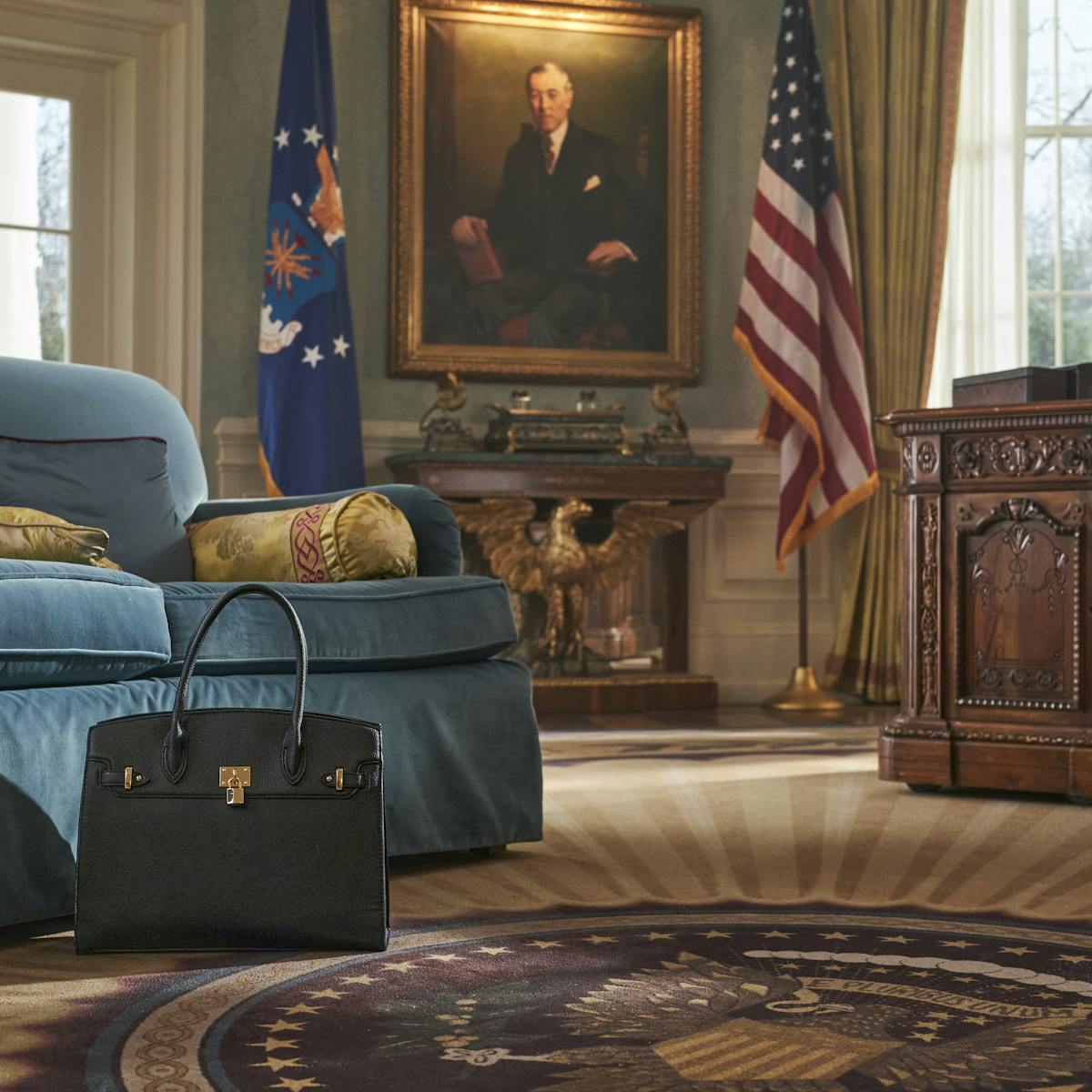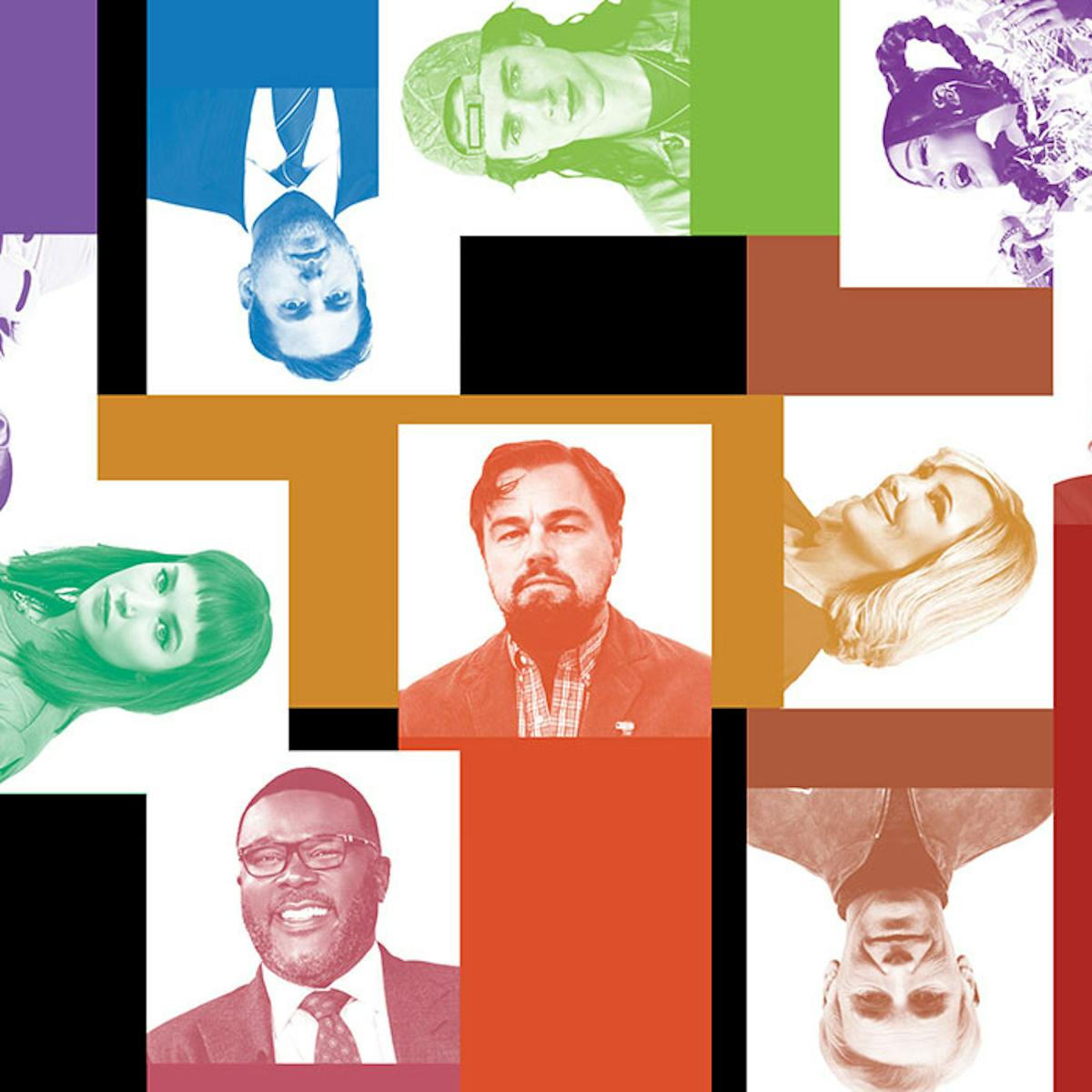Jonah Hill and Dr. Phil Stutz open the doors to their therapy sessions — and let us in on their innermost ideas and insecurities.
What happens when the questioner becomes the questioned? In his documentary directorial debut, Stutz, Jonah Hill (Superbad, The Wolf of Wall Street, Don’t Look Up) flips the script, turning the camera on his personal therapist, Dr. Phil Stutz — whom Hill simply calls Stutz — for a series of conversations about personal growth, attachment, and emotional development.
Hill, who has been vocal about his journey with anxiety, first went to see Dr. Stutz around five years earlier out of a “desperation to get happier.” In the film, he discusses his struggles with low self-esteem as a teenager, stemming from insecurities about his weight. Hill credits Dr. Stutz and his proactive methods, which he calls The Tools, for helping him forge a happier, healthier life. As something of an evangelist for Dr. Stutz’s patented therapy modality, Hill sought to share the practical tools widely through the film. “I’m making this movie because I want to give therapy to as many people as possible,” he says.
In Stutz, the therapist explains how his childhood, including the death of his three-year-old brother when Stutz was nine, and his more recent diagnosis of Parkinson’s Disease, led him to forge these critical therapeutic principles. Stutz is not a guru so much as he is a guide — he is careful to assert again and again that none of his tools are a perfect cure; the real work is in finding satisfaction in the process, not some final result. Stutz’s charisma — his tart New York accent, biting sense of humor, and unvarnished honesty — carry the film and help unpack his practical yet philosophical approach to therapy and life.
Here are two people, admittedly imperfect and in process, strong enough to show their love for one another.
Alex Frank

Jonah Hill and Dr. Phil Stutz
Beginning as a somber, serious documentary filmed in black and white, Hill soon experiments, breaking the fourth wall to bring us into the therapeutic process of opening up and letting go of perfection. While Stutz was shot across many months, Hill had initially intended it to appear to take place over the course of one day; at one particularly gonzo point in the film, Hill shows us the wig he wears for visual consistency. We initially see Hill and Stutz in stark repose against plain backgrounds, or in intense one-on-one sessions in Stutz’s supposed office, but eventually, the camera zooms out to reveal green screens and sets, helping to break through the movie magic and give us something realer and raw.
This open approach allows the heartfelt care between doctor and documentarian to shine through. Where therapy can sometimes be a cold endeavor, with a palpable distance between counselor and counseled, it’s clear that not only do Hill and Stutz know each other well, they also share a great amount of kinship and affection. At one point towards the very end, the simple but profound trading of “I love you” testifies to the movie’s reason for being: Here are two people, admittedly imperfect and in process, strong enough to show their love for one another.




